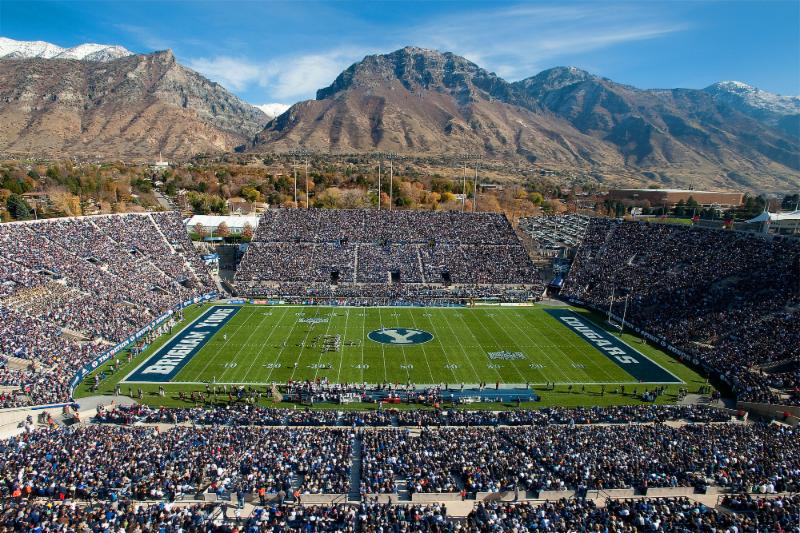The formula for increasing interest in college football used to be simple: add a whole bunch of seats and center a marketing campaign about the huge crowds attracted to OldU Stadium.
Today, many colleges are finding that filling those last 5,000 seats is a real challenge — to the point where it’s not really worth the effort. Instead of merely expanding capacity as a way to stare down a financial challenge, they’re finding the better route is to enhance the fan experience with more upscale offerings. Instead of cramming as many fannies into the bleachers, colleges are adding more social spaces, group areas and standing-room decks.
In short, the pursuit of the sellout is rapidly dying out in college football.
At BYU, college administrators are working to improve LaVell Edwards Stadium, last updated in 1982. BYU is in a collegiate arms race with the University of Utah, which is looking to expand and overhaul 45,807-seat Rice-Eccles Stadium, where the Utes have sold out 38 consecutive games. Now, LaVell Edwards Stadium seats 63,470, and sellouts are rare. But both colleges are looking at dealing the same way with their stadium issues: by adding premium areas and upping the fan experience, not just installing new seats.
In Salt Lake City, college administrators are awaiting a feasibility study for stadium upgrades, including additional suites, loges, fan interaction and concession areas.
That same feeling is shared by BYU athletic officials. Instead of looking at a huge overhaul, though, BYU is making a series of small, but significant upgrades for the 2017 NCAA football season. From the Salt Lake Tribune:
“The big thing for us right now is not necessarily seats,” athletic director Tom Holmoe said. “It is hospitality. Those are the things that we are turning our attention to: hospitality and making it really a place where people come for social [activities] and hospitality. It used to be all about the game. Now, people, including our students, come to see things other than the game.”
Added Duff Tittle, BYU’s Associate Athletic Director for Communications: “We think the size of the stadium is at a pretty good number right now. What is really important in college football right now is the experience that fans get while they are there. And that’s what we’ve been spending a lot of our time, energy and resources on, to make sure we are providing a great overall game-day experience.”
For instance: while wireless connectivity was upgraded for 2016, there are still areas unserved by WiFi service. Those dead pockets should be covered after 2017 upgrades. And BYU is working with wireless vendors to upgrade cell-phone service. Look for BYU to announce some additional concessions upgrades down the road as well. You won’t see any big changes in the future — but annual changes, like the wireless and concessions upgrades, certainly resonate with fans.
Photo courtesy BYU.
This article first appeared in the weekly Football Stadium Digest newsletter. Are you a subscriber? It’s free, and you’ll see features like this before they appear on the Web. Go here to subscribe to the Football Stadium Digest newsletter.

